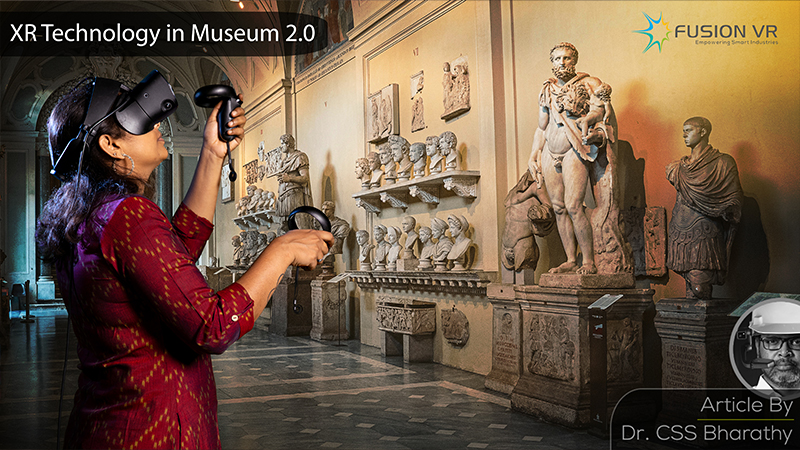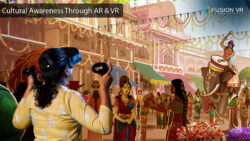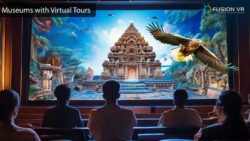One of the most memorable trips in our lives would be the day trips we had in school when we were young. Most of these have been to museums or memorials to teach us about the importance of history and also inspire us to decide on what we could become in the future.
What is essentially a fun and adventure trip for most of us becomes a really stressful experience for our teachers. However, the importance of visiting museums and the great learning experiences it provides is never diminished. The value and benefits of visiting museums can never be underestimated as well.
As we grow older and travel, we always tend to visit and obtain museum experiences wherever we go. That is because there is so much to learn about the countries we visit in those museums and the artefacts there. The Mona Lisa can be viewed only if we visit the Louvre in Paris, France. The statue of David, by Michelangelo, can only be seen in Florence, Italy.
While we all love to visit such museums once in a lifetime, we are also hit by the reality of how expensive our wishes could turn out to be. Some of the most significant museums of the world with collections that cannot be matched are often located in the Western hemisphere.
They can be found in major cities in Western Europe or North America. Governments and not-for-profit organisations invest millions of dollars to establish and maintain these museums. They are regularly visited by school children and tourists. While adults aspire for the customary selfie and share them on social media, the true impact of museum visits is experienced by the young ones.
While the residents of such countries are fortunate to have these world-class museums in their neighbourhoods, the rest of us and our children in developing countries are not. We do have museums in our country and in our major metros that are also difficult to access.
The growth of computing and telecommunication technologies is bridging the gap between the haves and have-nots. The field is being levelled using technology that enables anyone with a computer or smartphone to visit the valuable collections of museums worldwide. Welcome to the fantastic world of virtual museums.
Here are some of the best virtual museums in the world, and they not only inform but instruct. We have to engage the minds of the younger generation to learn from others, get inspired and not repeat the mistakes of the past. I can see that you are getting interested to know more about virtual museums, interactive museums etc. and so here we go!
I recommend that you begin with the Google Arts and Culture page to spike your interest in virtual museums. They have listed more than 1200 sites where you can have a virtual museum experience. You would very quickly realise that almost every museum is aspiring to bring its collections virtually to you.
The Smithsonian National Museum of Natural History welcomes its virtual visitors with the view of a large African elephant. The size and grandeur of seeing it virtually and up close can only be beaten by seeing this massive pachyderm in real life.
Explore the various collections to get enthralled by the wealth of the natural kingdom. Check out the hundreds of species of butterflies, the skeletal reconstruction of prehistoric dinosaurs, and, what is more, enjoy a walkthrough through the corridors and collections of the real museum.
This is the magic of virtual museums, as it brings you the timeless wonders of nature directly to you and not the other way around. All you need to have is a computer or your smartphone. You can enjoy this in the comfort of your home, in class or while commuting to work.
If you happen to be an art lover, prepare to be amazed and even inspired by viewing the countless collections of arts in the many art museums across the globe. The Rijksmuseum in Amsterdam, The Uffizi Gallery in Florence, The Museum of Modern Art in New York or The Art Institute of Chicago have opened their virtual doors.
Governments and private entities across the world are racing to ensure that people have access to the Internet and thereby enjoy unlimited access to the wealth of knowledge it holds. Each museum visit exploration is a digital adventure in itself. We may not be able to stop ourselves from viewing the wonders of their collections.
It doesn’t matter if you are rich or poor, young or old, active or disabled. You can explore any museum virtually. Digital technologies have not only captured in accurate detail the wonders of the virtual museum, but has made it possible to view them with negligible latency.
It presents all the artifacts up close and personal and allows you to view it in detail for an unlimited number of times and duration. Digital collections can be virtually handled and do not damage the original artefact. The advent of VR museum experience is moving the visitors’ experience to a whole new level.
Virtual reality technology enables the visitor to have an unparalleled immersive experience that is only matched by physically being in the real version of the same museum. The visitor uses a virtual reality headset to delve into the wonders of the museum and is able to move and navigate in all directions much in the same way as in real life. This teleportation to the virtual world is nothing short of a magical experience for those who are unable to visit museums in person.
As time passes, there are many artefacts and paintings in the museums that deteriorate rapidly due to the visitors. Moisture, heat and light have a serious impact on these artefacts and one day. They may simply not be there anymore. It is important to implement digital technologies in museums and capture them when we still have the time, capture their innate wonders and digitise them to enable a wider audience to enjoy them forever. Every VR experience centre created by traditional museums is taking this benefit a step further.
Virtual museums deliver their greatest value to society by helping with the effective preservation of rare and fragile artefacts for future generations. The industrial revolutions from the 18th century have led to the creation of corporations that also want to preserve their history through corporate experience centres. There is great interest in preservation, and museums of every type are springing up everywhere in the world. They are also enabling critical research on these artefacts and helping mankind understand in greater detail our unrecorded past.
Closer home, many museums in India are also going virtual. This is crucial considering the large population and the need to make museum experiences more accessible to everyone. I am continually engaged in the development of digital and virtual museums across the country.
Please visit the virtual museums website of the Ministry of Culture, Government of India, to learn more about the various virtual museums in our country, which host several galleries and exhibitions. Your visit would be a small contribution towards efforts to preserve the rich cultural heritage of Bharat.
Fusion VR is a leader in digital museums and has successfully implemented several projects in the country that have received considerable appreciation and acclaim. The Museum 2.0 effort will deliver all the benefits that I have illustrated above in this blog. Consider this a request and appeal to visit virtual museums on the internet and also explore our website on our services towards this cause.





